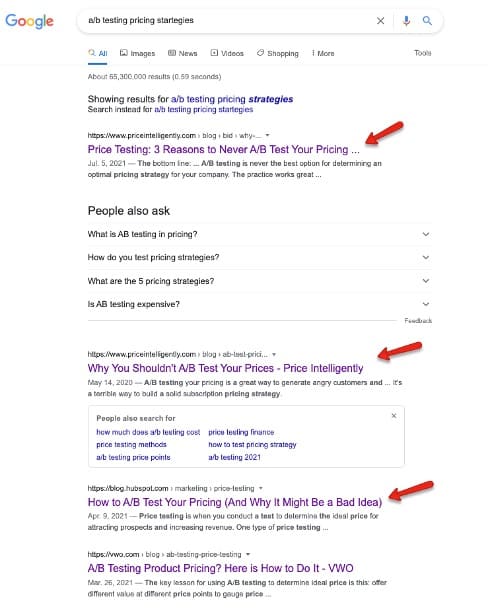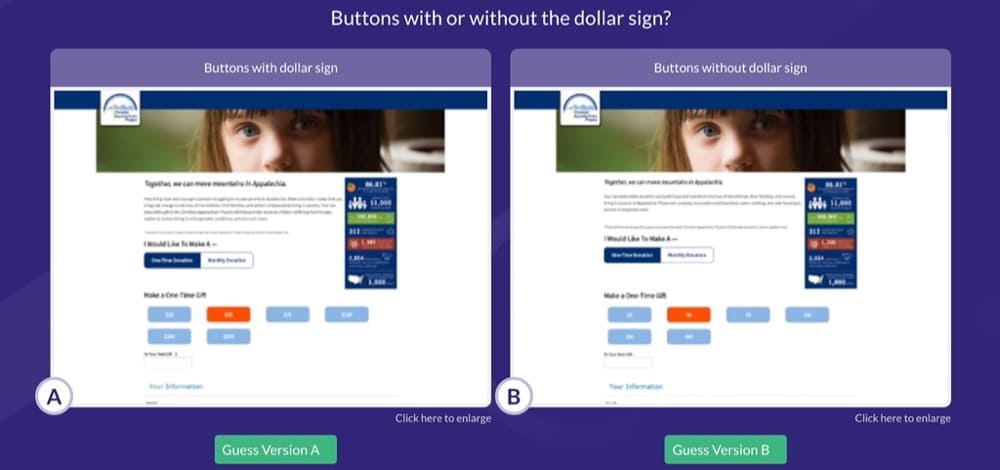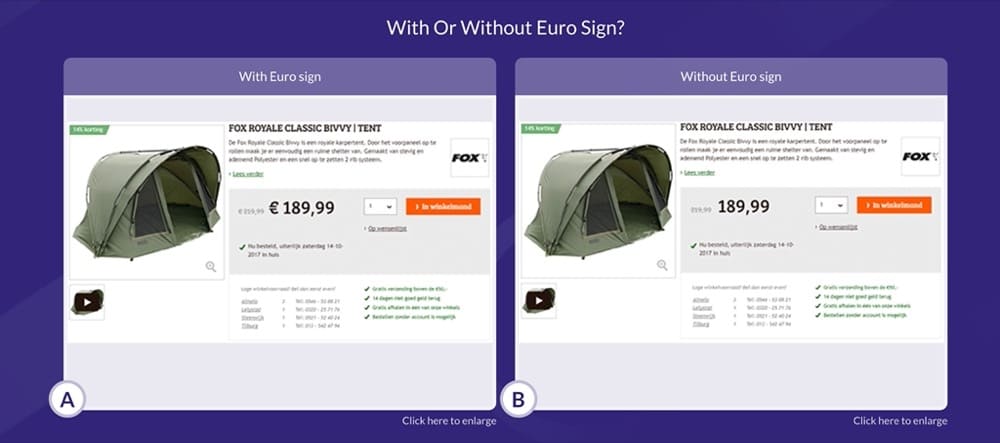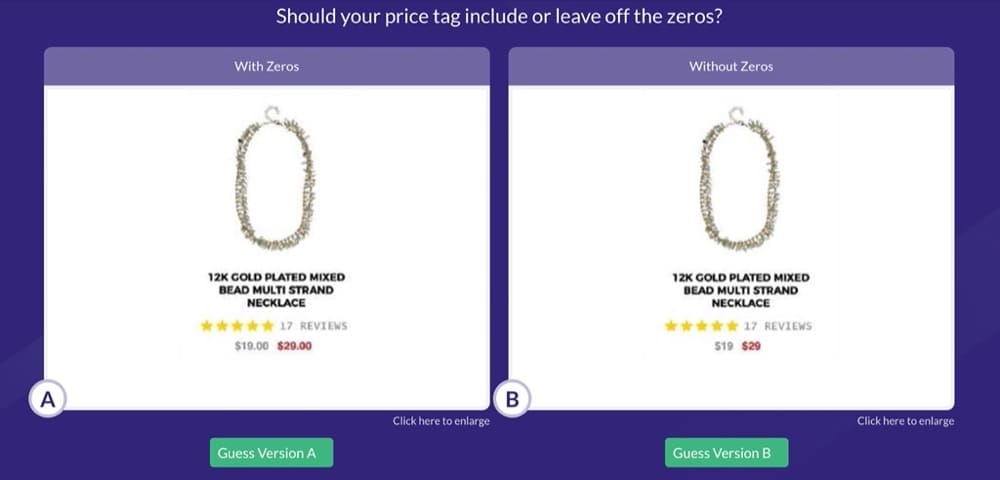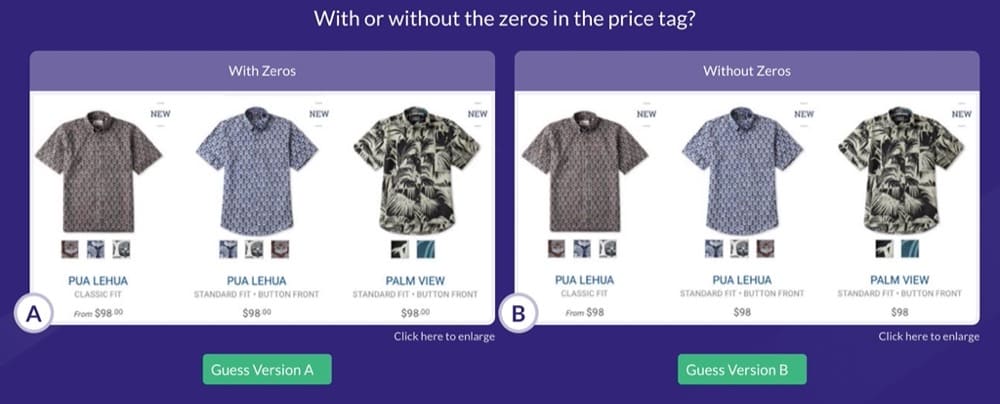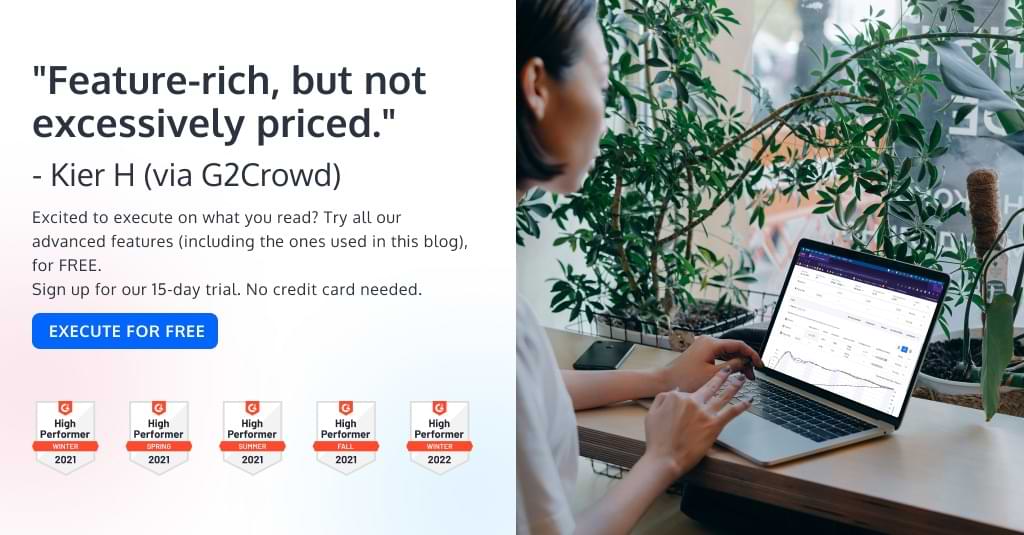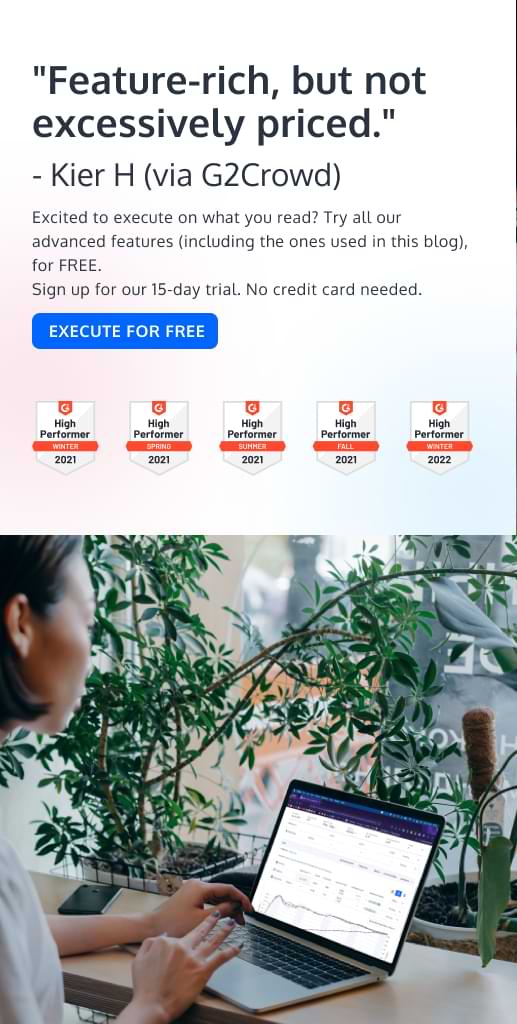5 A/B Testing Pricing Lessons Learned From 500 eCommerce Tests

I’m going to let you in on a little secret.
It’s not something I really like to admit, but it’s true…
I’m old enough to remember the early days of the Internet. Back before there was such thing as Google and most sites were still on Geocities.
Since the dawn of the web, I’ve spent over 87,600 hours surfing and optimizing websites. I’ve also been in the fortunate position to run and analyze over 500 A/B tests.
Through this experience, I’ve created a large repository of what works and what doesn’t.
Of all the A/B tests I’ve seen over the years, the simplest, most profound, and most impactful are studies around pricing.
- Why A/B Test Pricing?
- Google Doesn’t Help
- The Perception of Price
- What’s Best to Test with Pricing?
- A/B Testing Pricing Idea #1. Including or Removing the Currency Symbol
- A/B Testing Pricing Idea #2. Dropping the Comma
- A/B Testing Pricing Idea #3. Dropping or Adding the Zeros
- A/B Testing Pricing Idea #4. Trying Round Numbers
- A/B Testing Pricing Idea #5. Using the “Magic” Numbers 7 and 9
- Summary
- More Helpful A/B Testing Pricing Resources
Why A/B Test Pricing?
Pricing is fundamental to your business’ success. The price tag and the way you display your product prices can make or break sales.
A/B testing pricing is a valuable way to optimize profits.
Pricing tests can be simple, effective, and bring incredible returns making for happy bosses or clients.
Testing pricing, literally, makes cents.
But it’s hard to know exactly what to test or where to start.
Google Doesn’t Help
Do a quick Google search on A/B testing pricing strategies and you’ll see a collection of articles swaying you against A/B testing pricing:
These articles warn about the dangers of building customer resentment if you lower the price for half of the visitors, but not the other.
They also assert it’s very difficult to get a statistically significant sample size to accurately test shifting consumer preference.
While these points are certainly valid, what they fail to mention is that you can easily, accurately, and effectively A/B test pricing — without ever actually changing the price itself!
How?
By simply altering the perception of price. In other words, how your price looks or appears to a user.
The Perception of Price
If there’s one thing you can count on, it’s that the way you present your pricing impacts conversions.
The presentation of numbers heavily influences our perception. And, that, in turn, can affect whether we decide to purchase something.
As Jonny Longden, Co-founder and Conversion Director at Journey Further has eloquently said, the psychological experience of receiving value is more compelling than the value itself:
What’s Best to Test with Pricing?
Given that price is a perception that can be influenced, what should you test with pricing?
As an eCommerce retailer, there are a number of simple and effective pricing tests that you can run no matter your industry vertical or audience.
So long as you’re selling something on the site, these top five A/B test ideas can work wonders and immensely payoff.
Here are my top five A/B test suggestions every eCommerce site must try. These tests are based on years of research, data, and real-life case study evidence.
A/B Testing Pricing Idea #1. Including or Removing the Currency Symbol
To reduce the “pain of paying,” some research has found, when expensive restaurants remove the currency symbol on their menu, customers are more likely to order higher ticket items and spend more.
The same effect can be applied in Conversion Rate Optimization (CRO) and A/B testing to help reduce sticker shock and increase the willingness of customers to purchase on your eCommerce site.
As this GuessTheTest case study shows, removing the currency symbol can really help conversions because it makes the item look cheaper.
But always test!
Because as another GuessTheTest experiment indicates, removing the currency symbol can also work against you — if the price itself isn’t clear when there’s a lot of additional numbers and product details in the same area.
A/B Testing Pricing Idea #2. Dropping the Comma
In the same way that removing the zero sign can influence the perception of value, some research has found a comma can have the same effect.
To make the price look smaller, test the effect of removing the comma in the number.
For example, if the item sells for $1,299.00, test posting the price as $1299.00.
You may be surprised what happens when you drop this simple piece of punctuation.
Note, if you’re a grammar nerd, do not even consider testing this trick! 😉
A/B Testing Pricing Idea #3. Dropping or Adding the Zeros
Just like dropping the currency symbol and comma between numbers can make prices look shorter and smaller, removing the zeros in a tag price can also work wonders.
If you’re using whole numbers (for emotional purchases), test formatting your price as $20 as opposed to $20.00, for example.
As this GuessTheTest case study found, simply dropping the zeros made the number look smaller and the price cheaper, increasing conversions.
A similar GuessTheTest case study validated this result, interestingly, found the effect worked best on mobile.
The reason is likely because the price is more of a focal point on mobile.
On mobile, the zoomed-in, vertical view means every element presented, including the price, appears larger. So there’s more focus on the price itself.
As an interesting side note, some pricing psychology research has found shoppers perceive a price to be lower when the amount is displayed in a smaller font.
So it’s worthwhile testing the effect of intentionally formatting your mobile prices in a smaller font than on desktop.
Doing so may make the cost look smaller and perceived as less.
Add the Zeros to Highlight Sales and Discounts
That said, an interesting psychological counter is if you want to make the price look more expensive, you should test including the zeros.
Why would you ever want to make something look more expensive!?
There are plenty of examples… all related to sale prices.
Say you’re advertising a sale price on conference tickets and want to highlight that participants will save $300.00 on tickets, for example.
Adding the extra, non-significant zeros makes the savings look that much bigger, and, therefore, more desirable.
Cha-ching!
A/B Testing Pricing Idea #4. Trying Round Numbers
Whether you should price an item as a round number, like $100, or knock off one cent and make it $99.99, it’s an A/B test certainly worth doing.
What difference can one cent make?
A huge one when it comes to conversions!
Use Rounded Numbers for Emotional Purchases
In general, research has found that round numbers, like $100 and $20, are more easily processed, and therefore, work best for emotional purchases, where the customer can make an impulsive decision and justify the cost by claiming that it, “just feels right.”
Interestingly, additional research has found men tend to buy more when prices are rounded — maybe because they’re more likely to make more emotional purchase decisions?
And while we’re on the top of gender and pricing, some research has found, men tend to buy more when prices are presented in red font, likely because the color symbolizes a sale price.
Use Rounded-off Numbers for Rational Purchases
On the flip side, for more rational, practical purchases, like dish soap, for example, an item priced at $9.99 looks less expensive than the same item going for $10.00.
And, therefore, sells better when it’s positioned with a non-rounded item ($9.99) to look cheaper.
Research has also found women tend to buy more when prices are not rounded.
What’s going to work best for your site or your clients?
The answer depends on what’s being sold and if the primary target market is men or women.
Always test, but in general:
- For emotional purchases = use round numbers ($100)
- For practical purchases = use non-round numbers ($99.99) to look less expensive.
A/B Testing Pricing Idea #5. Using the “Magic” Numbers 7 and 9
You’ve just seen how the number $19.99 can look a lot more desirable than a one-cent higher-priced item of $20.00.
According to some research, the reason is that we tend to process numbers by first looking at the right-most digit. We then quickly evaluate the price in our head — before we even finish reading the full amount.
Research looking at the optimal number to end prices shows the “charm numbers” 7 and 9 are like magic numbers that tend to convert best.
Poke around at competitors’ websites and you’ll notice, their prices will tend to end in digits using 7 and especially 9. In fact, research shows, up to 65% of all prices end in the number 9.
And there’s a good reason. Prices ending in 9 tend to sell best.
In fact, a study done by researchers and MIT and the University of Chicago positioned the same item of clothing priced at $44, $39, and $34.
Which price do you think won?
If you guessed $39, you’re right! Although clearly not the cheapest price, it looked the best.
Ending prices in lucky number 7 can also work well.
Another study done on optimal pricing found $19.97 generated a 15% higher sale rate than the losing $19.93 variant. Changing the last digit by just $0.04 increased conversions by double digits!
So, test ending your prices in either 7 or 9.
Summary
There you have it, the top five easiest and potentially most profitable A/B pricing tests you can run based on decades of experience from running and analyzing tests.
As a quick, at-a-glance summary, here is what you should A/B test:
- Adding or removing the currency symbol
- Removing the comma
- Dropping or adding the zeros at the end of a round number
- Using rounded or non-rounded numbers
- Ending prices in 7 or 9
More Helpful A/B Testing Pricing Resources
I truly hope these test ideas are helpful.
A/B testing pricing is a passion and I’ve spent years of research focusing on the topic.
If you’re looking for more powerful pricing strategies that will help you immediately increase conversions and boost sales, this comprehensive 79-page pricing guide is for you.
It uncovers the most advanced pricing psychology research, distilled down into easy-to-understand, immediately applicable pricing principles and strategies.
Incorporating real-life A/B test case studies, from big-name brands, this guide gives you many money-making testing ideas and takeaways, showing you understand what works — and doesn’t — with product pricing.
Ready to uncover powerful pricing psychology principles that will help boost your sales? Get the guide.


